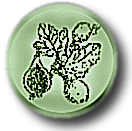Subsystem: Serine Biosynthesis
This subsystem's description is:
Serine biosynthesis is a major metabolic pathway in E. coli. Its end product, serine, is not only used in protein synthesis, but also as a precursor for the biosynthesis of glycine, cysteine, tryptophan, and phospholipids. In addition, it directly or indirectly serves as a source of one-carbon units for the biosynthesis of various compounds.
===========VARIANT CODES:========================================
1.0 - can convert 3-phospho-serine to L-serine. This is also the first step in Glycine biosynthesis.
2.0 - has the capability to convert 3-phosphoglycerate to L-serine with a series of 3 reactions (SerA, SerC, SerB ) and also perform the role of the Variant #1 genomes
3.0 - only interconversion with Glycine (GlyA)
"x" after dot stands for a incomplete pathway.
For more information, please check out the description and the additional notes tabs, below
| Diagram | Functional Roles | Subsystem Spreadsheet | Description | Additional Notes | Scenarios | |||||||||||||||||||
Oops! We thought there was a diagram here, but we can't find it. Sorry
Serine biosynthesis is a major metabolic pathway in E. coli. Its end product, serine, is not only used in protein synthesis, but also as a precursor for the biosynthesis of glycine, cysteine, tryptophan, and phospholipids. In addition, it directly or indirectly serves as a source of one-carbon units for the biosynthesis of various compounds. ===========VARIANT CODES:======================================== 1.0 - can convert 3-phospho-serine to L-serine. This is also the first step in Glycine biosynthesis. 2.0 - has the capability to convert 3-phosphoglycerate to L-serine with a series of 3 reactions (SerA, SerC, SerB ) and also perform the role of the Variant #1 genomes 3.0 - only interconversion with Glycine (GlyA) "x" after dot stands for a incomplete pathway. Serine biosynthesis in plants proceeds by two pathways, the so called phosphorylated pathway and the glycolate pathway. In the phosphorylated pathway, serine is derived from 3-phosphoglycerate, an intermediate of glycolysis. This pathway also operates in bacteria, yeast, and animals. In the glycolate pathway, which is part of photorespiration (photorespiration), serine is derived from glycolate via glycine. The glycolate pathway dominates in the photosynthetic tissues. Most of the serine produced in this pathway continues with the photorespiration pathway and is returned to Calvin cycle via hydroxypyruvate and glycerate. The phosphorylated pathway is thought to contribute to serine biosynthesis in the dark and in non-photosynthetic tissues. Genes of the phosphorylated pathway are upregulated by high salinity, flood and cold. It indicates that the phosphorylated pathway is also important in supplying serine under environmental stresse ==========for NMPDR organisms:========================== The Vibrios, and Campylobacter are Variant #2. The LI, PN,PY,SA are Variant #1. http://biocyc.org://1555/ECOLI/class-subs-instances?object=Pathways Currently selected organism: Anabaena variabilis ATCC 29413 (open scenarios overview page for organism)

| ||||||||||||||||||||||||




